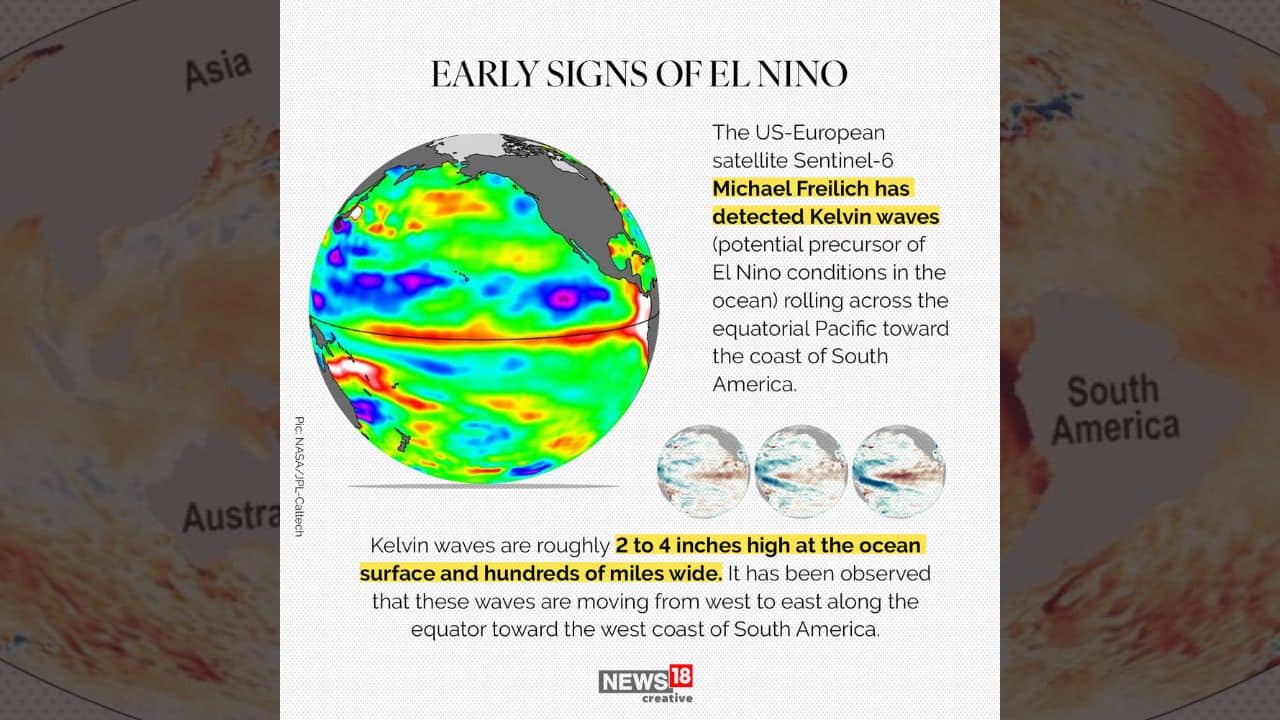In Pics: El Nino is almost here; a look at what it is & how it impacts global weather
The US-European satellite Sentinel-6 Michael Freilich has detected early signs of a potential El Nino event across the equatorial Pacific Ocean.
1/9

The US-European satellite Sentinel-6 Michael Freilich has detected Kelvin waves (potential precursor of El Nino conditions in the ocean) rolling across the equatorial Pacific toward the coast of South America. (Image: News18 Creative)
2/9

When they form at the equator, Kelvin waves bring warm water, which is associated with higher sea levels, from the western Pacific to the eastern Pacific. (Image: News18 Creative)
3/9

A climate pattern that describes the warming of surface ocean waters in the central and eastern tropical Pacific Ocean. This periodic climate phenomenon can affect weather patterns around the world. (Image: News18 Creative)
4/9

Both are complex weather patterns resulting from variations in ocean temperatures in the Equatorial Pacific. Together, they are the cold and warm phases of the El Nino-Southern Oscillation (ENSO). (Image: News18 Creative)
5/9

The term “El Nino” was originally used by fishermen off the coast of Peru and Ecuador to refer to warm ocean currents. It was later adopted by scientists to refer to El Nino events. (Image: News18 Creative)
6/9

El Nino events occur at irregular intervals of about two to seven years. La Nina events sometimes follow El Nino events. Typically, El Nino occurs more frequently than La Nina. (Image: News18 Creative)
7/9

El Nino can also trigger droughts, affect agricultural output, and severely exacerbate wildfire occurrences. (Image: News18 Creative)
8/9

The warming of oceans causes changes in atmospheric patterns, leading to a weakening of the monsoon circulation over the subcontinent. As a result, the monsoon tends to be weaker and less reliable during El Nino years. (Image: News18 Creative)
9/9

IMD has forecast normal monsoon rainfall in 2023. A 90 percent likelihood of an El Nino weather pattern developing during the June-September monsoon season raises the possibility of less than normal rain. (Image: News18 Creative)
Discover the latest Business News, Budget 2025 News, Sensex, and Nifty updates. Obtain Personal Finance insights, tax queries, and expert opinions on Moneycontrol or download the Moneycontrol App to stay updated!






